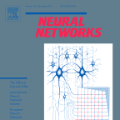Amyotrophic Lateral Sclerosis (ALS) constitutes a progressive neurodegenerative disease with varying symptoms, including decline in speech intelligibility. Existing studies, which recognize dysarthria in ALS patients by predicting the clinical standard ALSFRS-R, rely on feature extraction strategies and the design of customized convolutional neural networks followed by dense layers. However, recent studies have shown that neural networks adopting the logic of input-conditional computations enjoy a series of benefits, including faster training, better performance, and flexibility. To resolve these issues, we present the first study incorporating hypernetworks for recognizing dysarthria. Specifically, we use audio files, convert them into log-Mel spectrogram, delta, and delta-delta, and pass the resulting image through a pretrained modified AlexNet model. Finally, we use a hypernetwork, which generates weights for a target network. Experiments are conducted on a newly collected publicly available dataset, namely VOC-ALS. Results showed that the proposed approach reaches Accuracy up to 82.66% outperforming strong baselines, including multimodal fusion methods, while findings from an ablation study demonstrated the effectiveness of the introduced methodology. Overall, our approach incorporating hypernetworks obtains valuable advantages over state-of-the-art results in terms of generalization ability, parameter efficiency, and robustness.
翻译:暂无翻译




